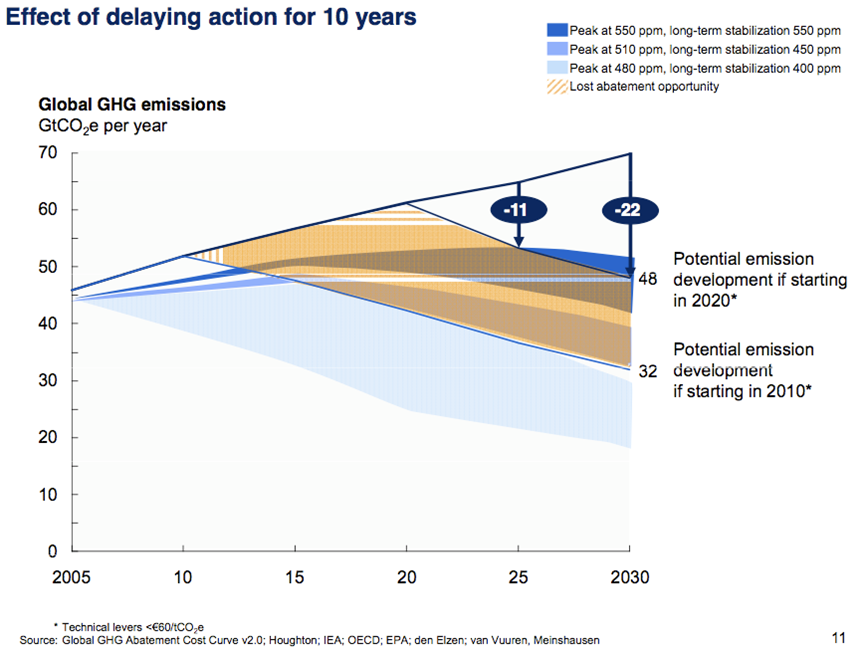A Lost Purpose
Overview
In 2020, humanbeings finally have valid and workable climate change agreement - each country sets up reasonable GHG emission reduction targets accroding to its accumulated GHG emission amounts. Nevertheless, this deal is too late to save our earth and other factors still cause other countries (excluding US, China and EU) can not achieve their committed reduction target or the targeted percentage of using renewable energy.
Although each country joining the climate change negotiation meeting is one of the driving force, other driving forces, such as Catastrophes - Acts of God, Increasing influence of media and Dynamics of Public Support, also play important roles in this scenario.
2010
In 2010 negotiations,we saw the situation that there was no serious agreement made, but the balanced power to make agreements shifted to few powerful countries - EU, US, and China. In the same period, huge public and media pressure drove main countries to take minor steps of climate change policies rather than major decisions to commit the goal of resonable GHG emission reduction amount.
2011-2013
Accroding to IPCC report issued in 2010, the global climate continued increasing since only EU and other countries that had limited negotiation power took the responsibility to reduce GHG emission, according to the goals set in the COP16 and CMP6 conferences from 29 November-10 December 2010 in Cancun, Mexico. However, during 2010~2013, the numbers of catastrophes happened increased dramatically, like the non-stoping rising sea level threatened the securities of island countires (Ex: Netherlands and UK), and the hugh amount of economical lose in these catastrophes alarmed most of the public, NGO, and media in the world. The louder and louder voice forced some major developed countires, like US, to sign inefficient GHG emission reduction agreements. For example, US president election was held in 2012, and US government approved minor climate change policies in COP16& CMP6 conferences in order to compromise public pressure, but the emission reduction target only had little effect to ease the increasing climate; EU still provided funds to support developing countries in order to puch these developing countries to reduce 20% GHG emission in each year; Several serious catastrophes happened in China let her have to commit a higher GHG emission limit to save her future and to gain more international positive awareness.
In the this period, main countries, including EU, US, and China, focused on green technology innovation and development. The green technology investment amount from China has been the largest green technology investment since 2009.
2014-2018
The results of climate negotiation conference in 2018 was quite positive and all the main GHG emission producing countries signed the reduction agreement without difficult negotiation processes. The reason why the negotiation became sucess was because the situation of climate got worse according to IPCC report issued in 2013 and because more and more catastrophes directly threatened people's lives. NGO with Media became the auditor in climate change issues. However, several factors ended up a failure result even though the climate change negotiaions procceded successfully in 2018 climate change conference:
Low education level to climate change issue was a problem in most of the developing countries. Global economics continued growing in China, India and other developing countries. Besides, the global population also increased. These above three factors caused the decrease number of global GHG emission per capita, but also resulted in the increase amount of total GHG emission at the same time.
Besides, although these countries signed the emission reduction argeements in 2018, not all the countries had the abilities to achieve the target. It was means that the failed story of Japan's -6% emission so far existed in this period.
Furthermore, EU, US, and China promoted and exported their green technology to other developing or under developing countries in order to balance the cost from reducing GHG emission in these highly technology developed countries. Therefore, when the developing countries with limited GHG emission reduction capabilities tried to apply renewable energy generation technologies, they faced the trade-off between their national budget flow-out and GHG emission reduction. To sum up, the gap between countries with developed green technologies and others with renewable solutions issues limited emission reduction achievements.
The worst situation was that China did not release sufficient and valid data in public in the beginning. Especially from 2009 China already became the largest carbon dioxide emission country, it was very possible that China government hided other information in order to save her face.
2019-2020
Although EU achieved his object to have each country setting up and signing resonable GHG emission reduction target in 2018, the agreement comes too late to save the earth. Several possible reasons could explain the results: Some countries or some multinational corporation decreased GHG emissions but they only belonged in some reasions, like EU. Second, GHG emission reached the peak in 2020 when the global agreement was already 10 years late.
